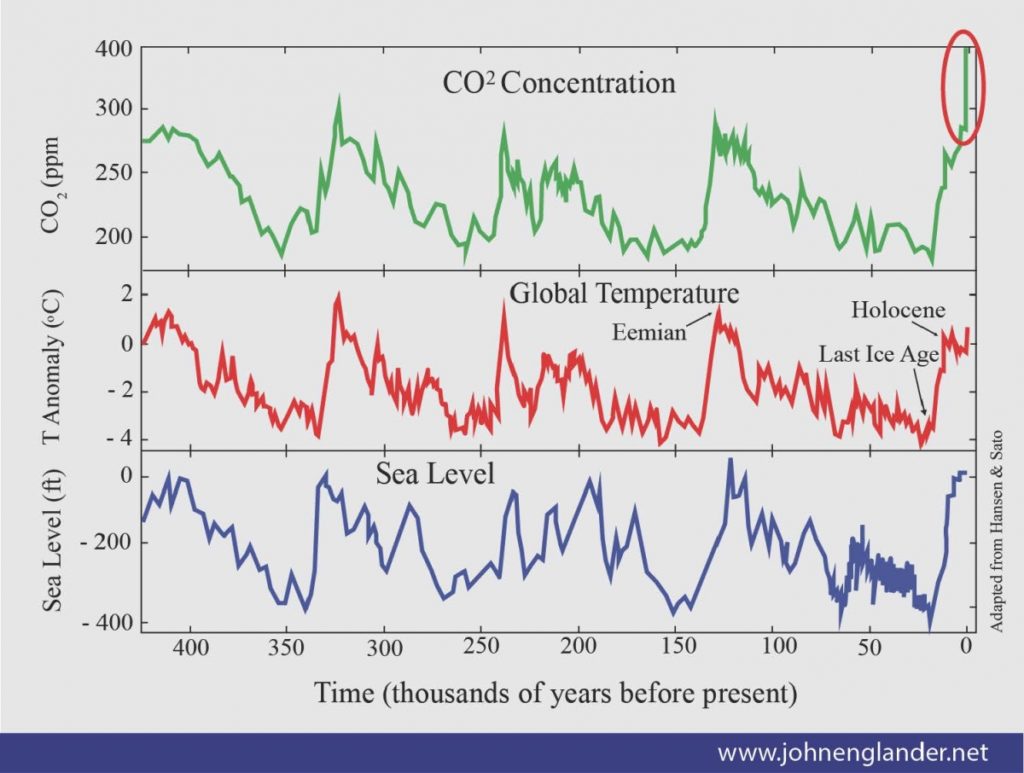The co2 is the driver of the temperature and then the oceans rise and fall with the temperature.
Good morning Ms Stormlover. My gratitude for your efforts here.
CO2 very strongly correlates with temperature via two mechanisms: greenhouse warming and the inverse relationship between gas solubility in liquids and temperature. As we all know - but some claim to reject - CO2 is a greenhouse gas and the warming it produces is, of course, proportional to its level in the atmosphere. Additionally, gases dissolve in liquids (like the CO2 in your Coke) but unlike, say, sugar in tea, under constant partial pressure, more gas dissolves as a liquid's temperature goes down. Increasing atmospheric CO2 increases global temperatures while decreasing atmospheric CO2 decreases global temperatures. Increasing temperatures decrease CO2 solubility in our oceans while decreasing temperatures increase CO2 solubility in our oceans.
Both effects produce the correlation seen in your plots. Throughout Earth's history, it has been the Malankovitch Cycle processes that have driven global warming and cooling but several published studies have shown a positive greenhouse feedback effect from CO2 outgassed from the world's oceans, amplifying and extending Malankovitch heating.
Several processes stop this feedback situation from running away entirely: The Stefan-Boltzmann law, which describes the relationship between temperature and thermal radiation notes that the relationship includes the 4th power of absolute temperature, so the effect tapers as temperatures rise. Additionally, the solubility of a gas in a liquid is also proportional to its partial pressure (its fraction of total pressure) so as atmospheric levels increase, absorption in the oceans increase. There is also some increased uptake from photosynthetic flora, including phytoplankton and, finally, at a geological pace, weathering increases with temperature and acidification and will slowly sequester CO2 in the oceans and marine sediments.
The greenhouse heating effect is demonstrated by numerous high-school level laboratory experiments. Deniers may argue that the effect it too weak, but they are ignoring the point that the 1.1C heating we've experienced has developed over 150 years. The amount of heating that would be produced in a 55 minute science class by real world gas concentrations would be necessarily small.
